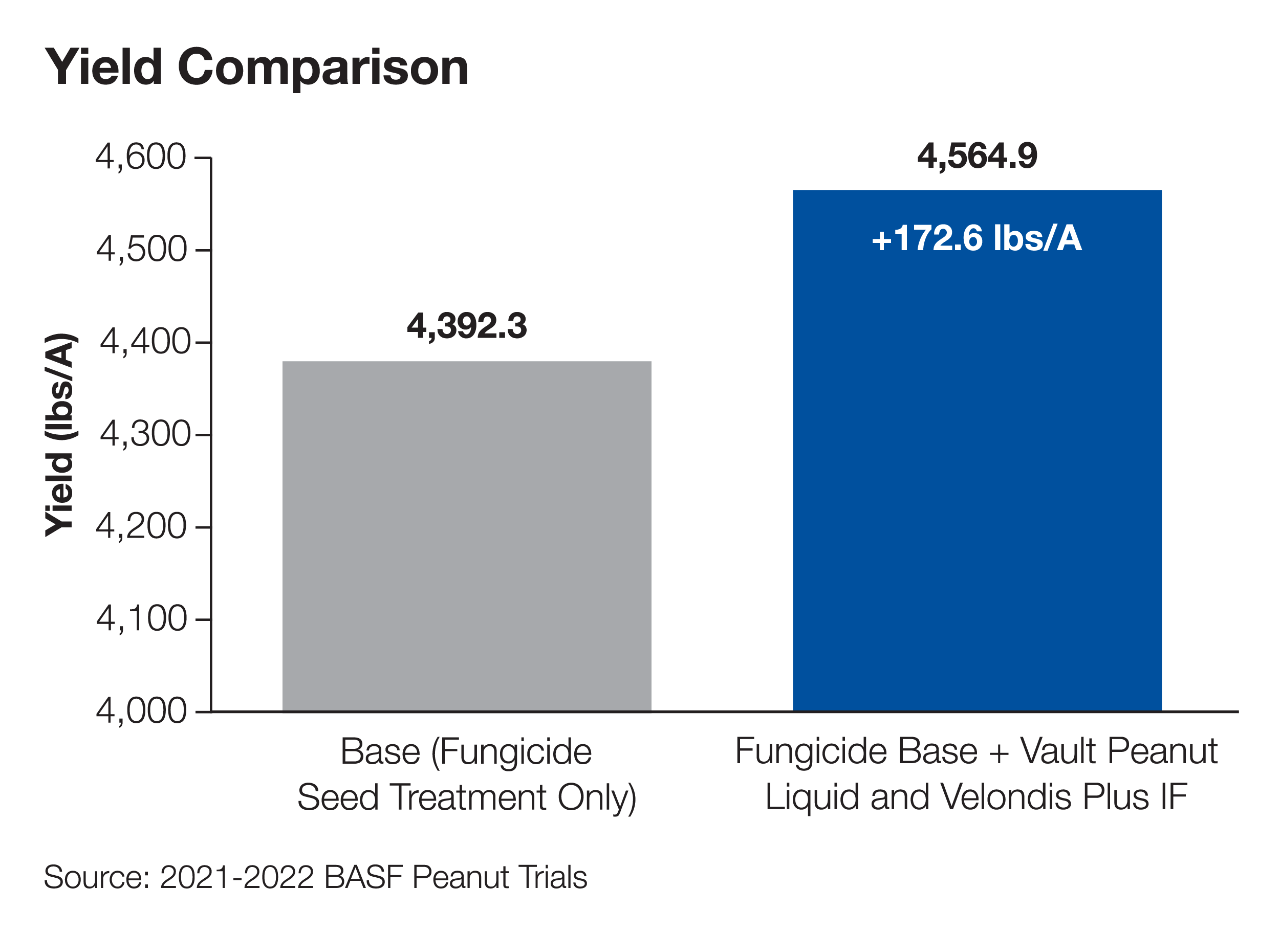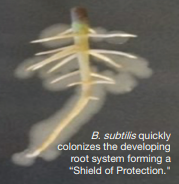
2 Biologicals plus 1 Inoculant
Added Yield Potential
Vault® Peanut Liquid and Velondis™ Plus
Biofungicide
Vault Peanut Liquid and Velondis Plus combines two biologicals — B. amyloliquifaciens and B. subtilis — along with an advanced inoculant strain — Bradyrhizobia arachidis — for enhanced root vigor, nutrient uptake, root rot suppression, and excellent yield performance.
Enter Zip Code or City
How Vault® Peanut Liquid and Velondis™ Plus Biofungicide Works
2 Biologicals plus 1 Inoculant
Vault® Peanut Liquid and Velondis™ Plus Biofungicide helps nodulation and nitrogen fixation for added yield potential. Velondis Plus® biofungicide provides enhanced root vigor, nutrient uptake, and suppression of Rhizoctonia and Fusarium root rot by producing beneficial biofilm and antimicrobial components promoting Induced Systemic Resistance (ISR) within the plant.


The biofilm generated by the bacteria acts like a glue to form “soil aggregates” that can retain more water in their pores. That allows the plant to hold water like a sponge, absorbing 10 times as much water as its dry weight. This can make more water available to plants and increase the time available for plants to metabolically adjust to stress from drought. 1
1 Zheng, W. , Zeng, S. , LaManna, J. , Bais, H. , Jacobson, D. , , D. and Jin, Y. (2018), Plant Growth-Promoting Rhizobacteria (PGPR) Reduce Evaporation and Increase Soil Water Retention, Water Resources Research, [online], https://doi.org/10.1029/2018WR022656
EPA-Registered Biologicals
When combined as Velondis Plus, the differential modes of action of the two biological actives can contribute to complementary activity with certain chemical seed treatments, resulting in increased and more uniform field performance. Both biofungicide active components grow along the developing root system and can extend the window of disease protection longer into the growing season. The plants produce a more vigorous root system, often resulting in more uniform stands, improved plant growth, and greater yield potential.
Maximizes Water and Nutrient Uptake
Control vs. B. subtilis

The samples were saturated with water. Neutron imaging recorded evaporation during about a nine-
hour period. Blue and green indicate the soil’s water content. The microbe-treated sample was the clear winner in water retention. 2

2021 BASF Inoculant Trial - UGA, Plains, GA
4 x 1.1 gallon bladder per case
Each 1.1-gallon bladder treats approximately 10 acres of peanuts. One case treats approx. 40 acres.
Guaranteed 2 billion (2x109) viable cells per milliliter.
2 Zheng, W. , Zeng, S. , LaManna, J. , Bais, H. , Jacobson, D. , , D. and Jin, Y. (2018), Plant Growth-Promoting Rhizobacteria (PGPR) Reduce Evaporation and Increase Soil Water Retention, Water Resources Research, [online], https://doi.org/10.1029/2018WR022656
* Plant Soil (2009) 320:295-305 – Effect of Hydrogen on soil bacterial community structure in two soil types as determined by terminal restriction fragment length polymorphism – Ye Zhang, Xiang He, Zhongmin Dong
BASF Inoculants: Quality from Start to Finish
BASF Innoculants: Quality from Start to Finish
BASF Inoculants: The Basics Behind Rhizobia Bacteria
BASF Inoculants: The Basics
Always read and follow label directions. Vault Peanut Liquid and Velondis Plus is a registered trademark of BASF. © 2025 BASF Agricultural Solutions US LLC. All rights reserved.